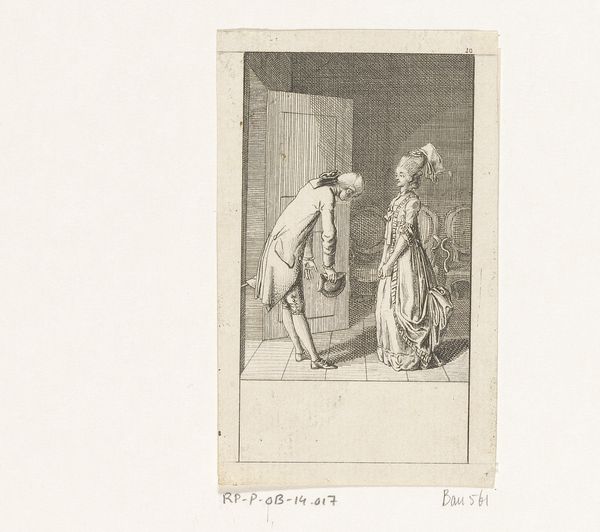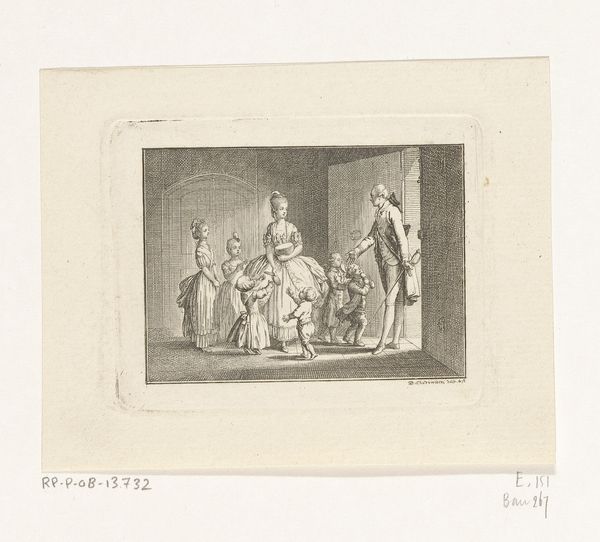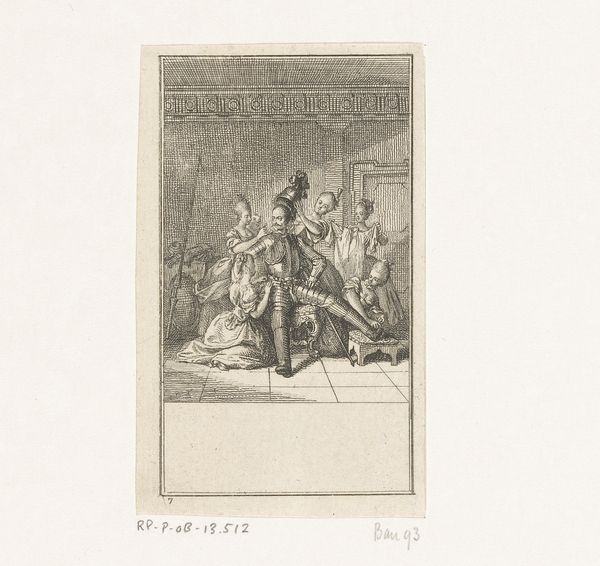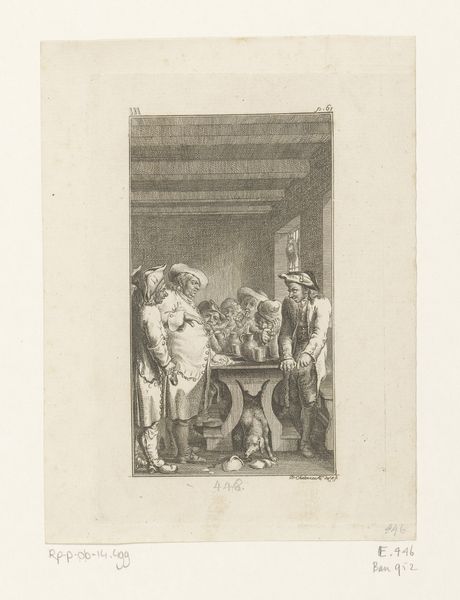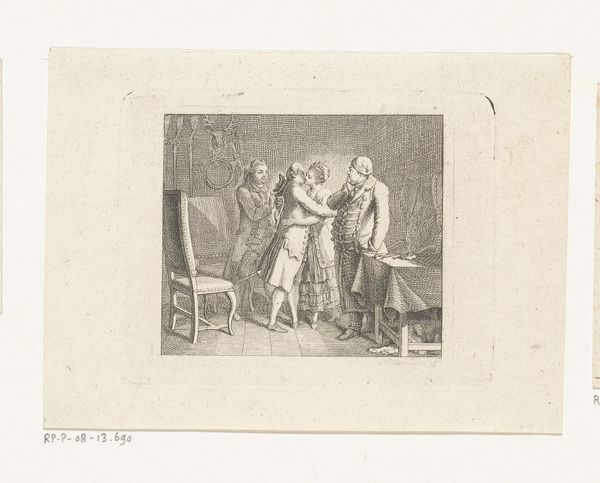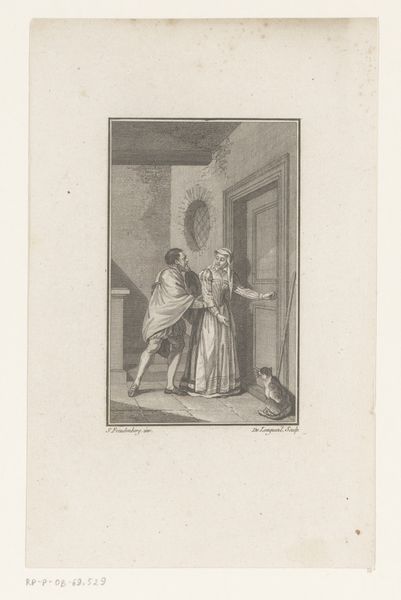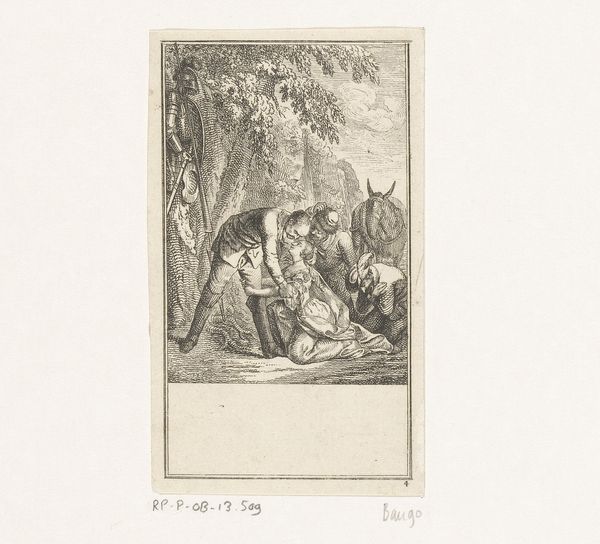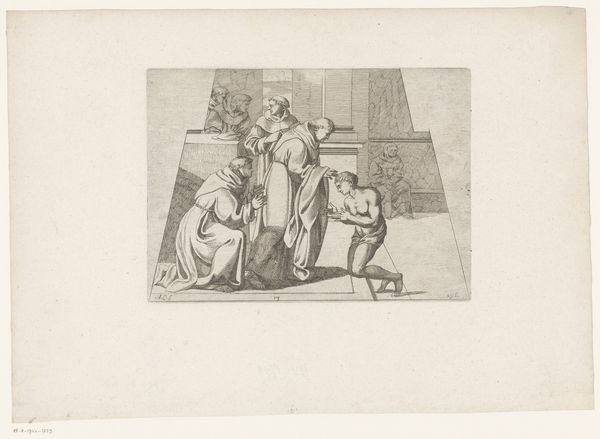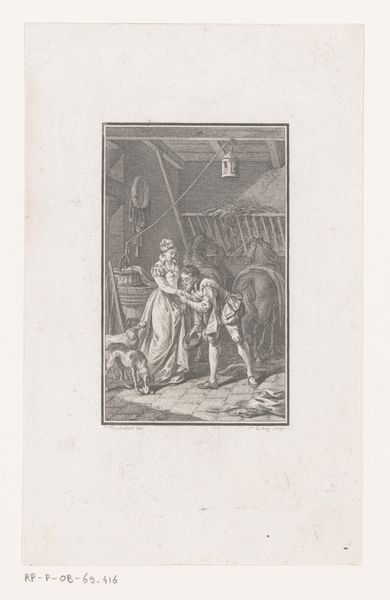
Dimensions: height 93 mm, width 58 mm
Copyright: Rijks Museum: Open Domain
Editor: This is Daniel Nikolaus Chodowiecki's "Begroeting bij binnenkomst" or "Greeting Upon Arrival," created in 1778. It's an engraving. I find the almost frantic energy captured within such fine lines quite striking. How do you interpret this work, focusing on its form? Curator: The density of line is certainly key to unlocking this image. Notice how Chodowiecki uses hatching and cross-hatching, particularly in the background, to create a sense of depth within a very limited space. Observe how the characters are rigidly structured using vertical and curved lines. How does that rigid structure influence your perception of the figures' emotional states? Editor: It makes them seem stiff, almost performative. The formality overrides any sense of genuine warmth. But why so much detail packed into such a small composition? Curator: Indeed, scale is also a fundamental aspect. The very act of magnifying this tiny image allows one to further understand the artist’s attention to meticulous details and overall effect. The intricacy contrasts sharply with the comparatively blank space at the engraving's bottom; that separation itself highlights the artifice inherent within the represented interaction, and that tension speaks volumes. What do you make of that visual disparity? Editor: I now see how the spatial relationships between the figures and the architecture add to that sense of unease. The compressed composition enhances that mood further. Curator: Precisely. Now that you appreciate those elements, consider how the overall design reflects Baroque aesthetics with controlled emotion, ornamentation, and detailed figuration, conveying tension without a chaotic spill. Editor: Understanding the intent behind the artist’s deliberate arrangement of these design elements helps me grasp the image's impact more fully. Thanks! Curator: It is rewarding to note that a Formalist perspective allows one to see how each part contributes to an overarching design; these principles highlight historical content by offering novel methods for grasping aesthetic intent.
Comments
No comments
Be the first to comment and join the conversation on the ultimate creative platform.
